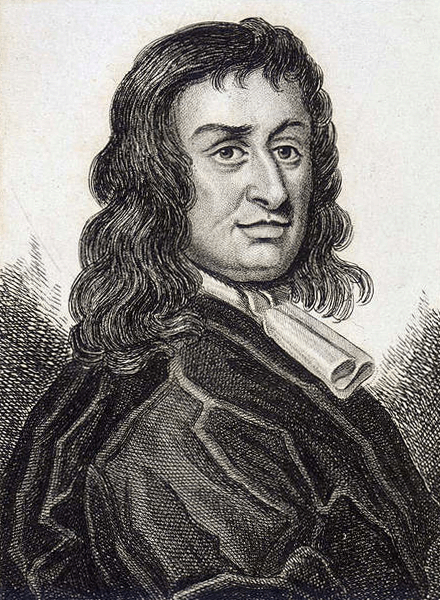|
Holcroft Hall
Holcroft Hall is a Grade II* listed privately owned historic house in Holcroft, Culcheth, Cheshire. History The manor of Holcroft was the product of a division of the manor of Culcheth in the mid-13th century, and the Holcrofts may have been descended from the de Culcheth family, the original holders of the manor, although the succession of the estate is not certain before John Holcroft, the lord of the manor in the early 16th century and father of the politician John Holcroft John Holcroft (died 1656) was an English politician who sat in the House of Commons variously between 1640 and 1648. He fought in the Parliamentary army in the English Civil War. In April 1640, Holcroft was elected Member of Parliament for Live ... (d.1560) and the courtier Sir Thomas Holcroft (d.1558). One of the family was Colonel John Holcroft, who favored the Parliamentary side in the Civil War. His eldest daughter, Mary Holcroft, married Colonel Thomas Blood to attempted to gain possessio ... [...More Info...] [...Related Items...] OR: [Wikipedia] [Google] [Baidu] |
Listed Building
In the United Kingdom, a listed building or listed structure is one that has been placed on one of the four statutory lists maintained by Historic England in England, Historic Environment Scotland in Scotland, in Wales, and the Northern Ireland Environment Agency in Northern Ireland. The term has also been used in the Republic of Ireland, where buildings are protected under the Planning and Development Act 2000. The statutory term in Ireland is " protected structure". A listed building may not be demolished, extended, or altered without special permission from the local planning authority, which typically consults the relevant central government agency, particularly for significant alterations to the more notable listed buildings. In England and Wales, a national amenity society must be notified of any work to a listed building which involves any element of demolition. Exemption from secular listed building control is provided for some buildings in current use for worship, ... [...More Info...] [...Related Items...] OR: [Wikipedia] [Google] [Baidu] |
Culcheth
Culcheth is a village in the Borough of Warrington, ceremonial county of Cheshire and historic county of Lancashire, England, six miles (10 km) north-east of Warrington town centre; it is the principal settlement in Culcheth and Glazebury civil parish. Culcheth is primarily residential, with a large village green at its heart where the annual Community Day is held. The old railway line is now known as Culcheth Linear Park. History On Saxon maps showing South Lancashire the village is marked as "Calchuth" or "Celchyth." On these very early maps and deeds the name is also written as "Kilcheth", "Kylchith" and "Kilshaw." It is derived from the Brittonic "cil" and "coed", 'at the edge of a wood,' 'black wood' or 'retreat in a wood'. There are a few examples of this name-formation today, such as the Welsh name for Caldicot, Monmouthshire, Wales is "Cil-y-coed", and possibly Culgaith, Cumbria. The first element in the name might also be ''*cǖl'', meaning 'narrow'. However, anoth ... [...More Info...] [...Related Items...] OR: [Wikipedia] [Google] [Baidu] |
Cheshire
Cheshire ( ) is a ceremonial and historic county in North West England, bordered by Wales to the west, Merseyside and Greater Manchester to the north, Derbyshire to the east, and Staffordshire and Shropshire to the south. Cheshire's county town is the cathedral city of Chester, while its largest town by population is Warrington. Other towns in the county include Alsager, Congleton, Crewe, Ellesmere Port, Frodsham, Knutsford, Macclesfield, Middlewich, Nantwich, Neston, Northwich, Poynton, Runcorn, Sandbach, Widnes, Wilmslow, and Winsford. Cheshire is split into the administrative districts of Cheshire West and Chester, Cheshire East, Halton, and Warrington. The county covers and has a population of around 1.1 million as of 2021. It is mostly rural, with a number of towns and villages supporting the agricultural and chemical industries; it is primarily known for producing chemicals, Cheshire cheese, salt, and silk. It has also had an impact on popular culture, producin ... [...More Info...] [...Related Items...] OR: [Wikipedia] [Google] [Baidu] |
John Holcroft (16th-century MP)
Sir John Holcroft (died 1560) of Holcroft Hall, Culcheth, was a soldier, politician, and landowner of the Tudor period. He was returned twice as a member of the English parliament for Lancashire. Background The date of John Holcroft's birth is not known, although it is known that he was born by 1498. He was the eldest son of John Holcroft of Holcroft: the remains of Holcroft Hall are close to the Glaze Brook, east of Culcheth, . Holcroft's mother was Margaret Massey, daughter of Hamnett or Hamlet Massey of Rixton, which lies a few miles to the south of Holcroft, on the River Mersey. The Masseys also had lands in the township of Pennington. The Holcrofts were minor landed gentry. The manor of Holcroft had come into being after Gilbert de Culcheth was murdered in 1246, leaving four infant daughters as heirs. As wards of William le Boteler, lord of Warrington, their marriages were sold to Hugh de Hindley, who married them to his own four young sons and divided the estate among them. ... [...More Info...] [...Related Items...] OR: [Wikipedia] [Google] [Baidu] |
Thomas Holcroft (politician)
Sir Thomas Holcroft (1505–31 July 1558) was a sixteenth-century English courtier, soldier, politician and landowner. Holcroft's fortune was made from speculation in former monastic properties, after having distinguished himself during the Anglo-Scottish Wars. He was a close supporter of Lord Protector Somerset and represented three constituencies in the English Parliament. Background and early life Thomas Holcroft was born at Holcroft Hall, Culcheth, Lancashire, the son of John Holcroft of Holcroft and Margaret Massey. The Holcrofts were minor gentry who had been resident since the Middle Ages at Holcroft Hall, the remains of which lie close to the Glazebrook, to the east of Culcheth. The manor of Holcroft was the product of a division of the manor of Culcheth in the mid-13th century and the Holcrofts may have been descended from the de Culcheth family, the original holders of the manor, although the succession of the estate is not certain before John Holcroft, the lord of ... [...More Info...] [...Related Items...] OR: [Wikipedia] [Google] [Baidu] |
Thomas Blood
Colonel Thomas Blood (1618 – 24 August 1680) was an Anglo-Irish officer and self-styled colonel best known for his attempt to steal the Crown Jewels of England from the Tower of London in 1671. Described in an American source as a "noted bravo and desperado,"''The New American Cyclopaedia: A popular dictionary of general knowledge'', Volume 3, George Ripley, Charles A. Dana, 1859 (D Appleton & Company) pages 372 to 373 he was also known for his attempt to kidnap and, later, to kill, his enemy, James Butler, 1st Duke of Ormond. Early life Sources suggest that Blood was born in County Clare, in the Kingdom of Ireland, the son of a successful land-owning blacksmith of English descent, and was partly raised at Sarney, near Dunboyne, in County Meath. He was apparently a Presbyterian. His family was respectable and prosperous (by the standards of the time); his father held lands in the Counties Clare, Meath and Wicklow. His grandfather was a member of the Irish Parliament, ... [...More Info...] [...Related Items...] OR: [Wikipedia] [Google] [Baidu] |
Listed Buildings In Culcheth And Glazebury
Culcheth and Glazebury is a civil parish in the Borough of Warrington, ceremonial county of Cheshire and historic county of Lancashire, England, northeast of the town of Warrington. It contains eleven buildings that are recorded in the National Heritage List for England as designated listed buildings. Other than the villages of Culcheth and Glazebury, the parish is rural. The A574 road runs through it, and two milestones adjacent to the road are listed. In addition a parish boundary stone on the B5207 road is listed. The church in Glazebury is also listed; all the other listed buildings are related to houses or farms. Key Buildings See also * Listed buildings in Croft *Listed buildings in Wigan * Listed buildings in Salford *Listed buildings in Rixton-with-Glazebrook Rixton-with-Glazebrook is a civil parish in the Borough of Warrington in Cheshire, England, to the east of the town of Warrington. It contains seven buildings that are recorded in the National Herit ... [...More Info...] [...Related Items...] OR: [Wikipedia] [Google] [Baidu] |



